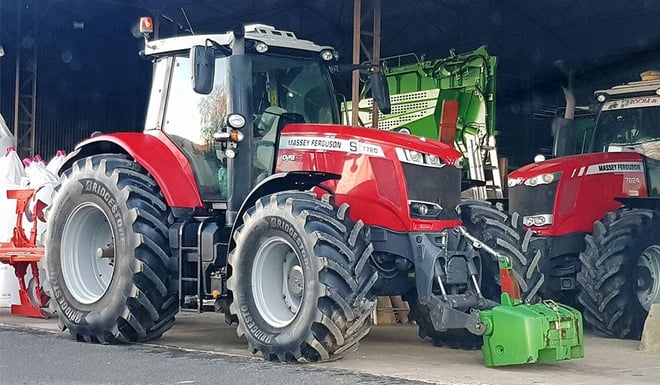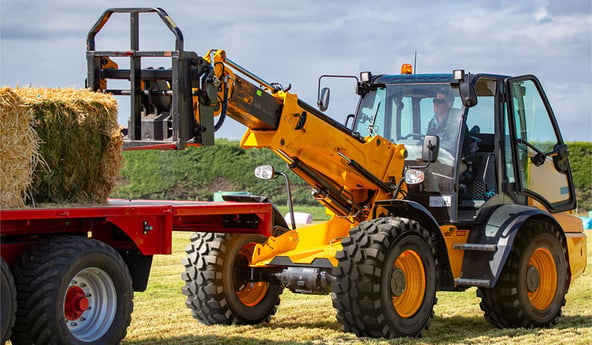When you replace your agricultural tyres, you have the opportunity of boosting your tractor’s capacities at a minimum cost.
Changing tyre size effectively allows you to increase the load capacity considerably without increasing inflation pressure, to improve your traction capacity and reduce soil compaction while continuing to work with heavy implements.
Swapping tyre series for larger tyres, however, must comply with very specific norms in order to obtain an optimal result and get the most from the change.
Here are all the explanations you need concerning a change of series:
1. Why change tyre series?
Increased load capacity
The first and certainly most important reason is to be able to improve your tractor’s load capacity without having to increase inflation pressure. If you have large sized implements, they tend to be heavier than average, which requires increased inflation pressure to avoid crushing your tyres which will damage them. This is where the problem of soil compaction arises, which can lead to a loss of future yields as a result of too much pressure.
The simplest solution is to change tyre series when you replace your tyres to obtain a greater volume of air in your tyres without changing the height of the wheels. This will allow you to increase the load without needing a higher inflation pressure. Your soil will be protected and you will be able to continue working with wider, heavier implements which will result in a significant improvement in your productivity.
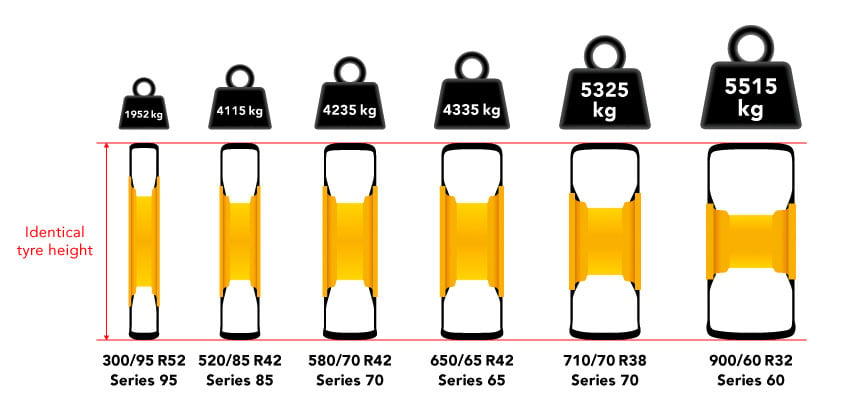 Comparison of load capacity depending on tyre series
Comparison of load capacity depending on tyre series
at a speed of 30 km/h with an inflation pressure of 1.3 bar,
except for the 300/95/R52 with a minimum authorised pressure of 1.6 bar for this model
Improved traction capacity
A bigger tyre will see the soil footprint become larger. Engine power is better transmitted to the ground because more studs grip into the earth at the same time. In wet conditions there will be less slip, you will save time in each plot with fuel savings linked to better management of your trailer’s ground adhesion.
If you use VF tyres, the very low pressure will allow you to increase traction capacity even more, while preserving the soil from compaction.
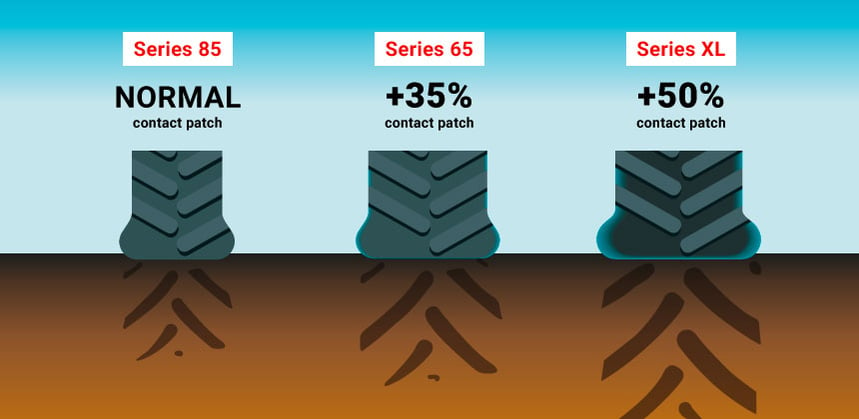 A change in tyre series allows you to increase the contact patch with the ground
A change in tyre series allows you to increase the contact patch with the ground
2. How to change your tractor tyre series
To enable you to interchange your tyres easily, the manufacturers working in Europe set in place a system of standards, starting in the 1960s, within a joint organisation: ETRTO (European Tyre and Rim Technical Organisation). This made it possible to harmonise dimensions, rims, valves, marking, loads, pressure and tyre characteristics.
Any manufacturer wishing to bring about a technical evolution must consult the others, so that everyone can agree and to simplify the possibilities for the end user. Recent evolutions have limited tolerance levels to ensure the compatibility of the tyres between different tyre sizes.
You will find below a size correspondence table for the different tyre series
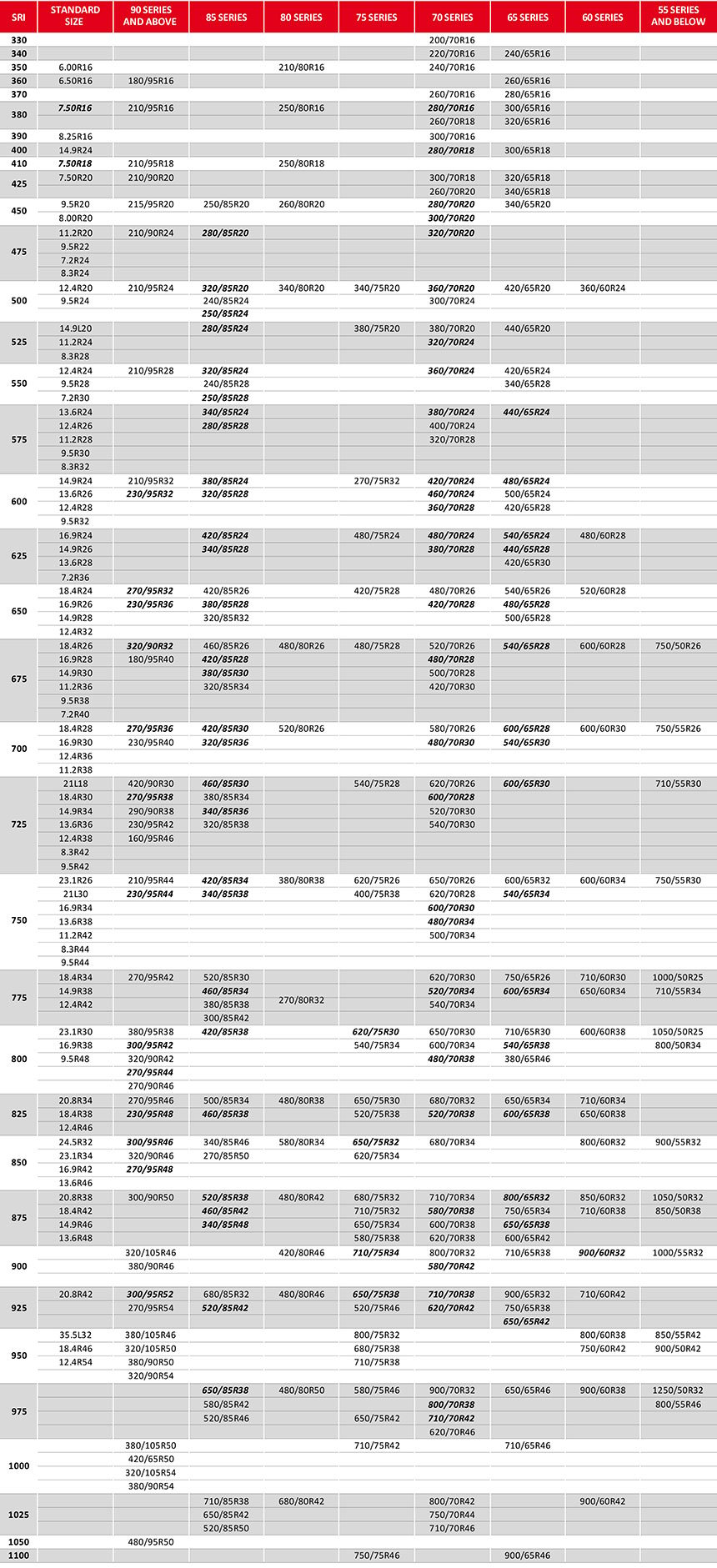
This table of inter-changeability for equivalent sizes is based upon ETRTO Speed Radius Index (SRI) and is for guidance only.
For any change of tyre size it is important to calculate & check the lead / lag percentage and to ensure sufficient height / width clearance of tyre / vehicle combination. Sizes in bold italic text are available from the Firestone Europe range of Agricultural tyres. This table does not include Agro Industrial nor Firestone America Products.
To change tyre series, there are basically 2 criteria to follow:
1. Have the same height so that the new tyre, with its larger tread, can be installed on your tractor without any major technical modification.
You can obviously increase the height of the tyres, which would certainly be beneficial for field crop farming, but this implies replacing all 4 tyres and checking that this operation is compatible with the transmission, engine power or overall dimensions of your tractor.
2. Comply with lead/lag rules, which is to say that your front tyres must be perfectly synchronised with your back tyres. As they are not the same size, they do not rotate at the same speed, which can generate a mechanical problem, wear or slip.
- If you have the right dimension ratio between the front axle and the rear axle (inter axle ratio), the lead ratio should be between 0 and 4%, which means that the drive shaft is working in harmony and everything is synchronised.
- If, on the other hand, the lead ratio is below 0% (lag), then the rear and front tyre dimensions are not compatible and the rear axle is pushing the front axle too much, leading to slip, resistance and rapid mechanical wear.
- If the lead ratio is higher than 5%, again the dimensions are wrong and the rear axle is holding back the front axle, leading to rapid wear to the front tyres and possible steering and mechanical problems.
To comply with these two criteria, you must refer to the first column (SRI) in the correspondence table above.
The SRI (Speed Radius Index) is a reference value for a group of similar sized tyres, despite having different widths, and which therefore have a similar rotation speed. The tyre’s rotation speed depends on its diameter, which explains why with the same diameter, the tyres can have the right lead ratio adapted to your tractor’s drive ratio.
3. Does changing tyre series obligatorily involving changing rims?
This is not an obligation and will depend directly on the difference in size between your current tyres and the tyre series which you are hoping to use.
If your original tyre is a standard series 85 tyre, you won’t be able to change to a series 55 tyre without changing the rims. On the other hand, you can go up one size without any problem, for example from series 85 to 70, without having to change your rims (see the table above).
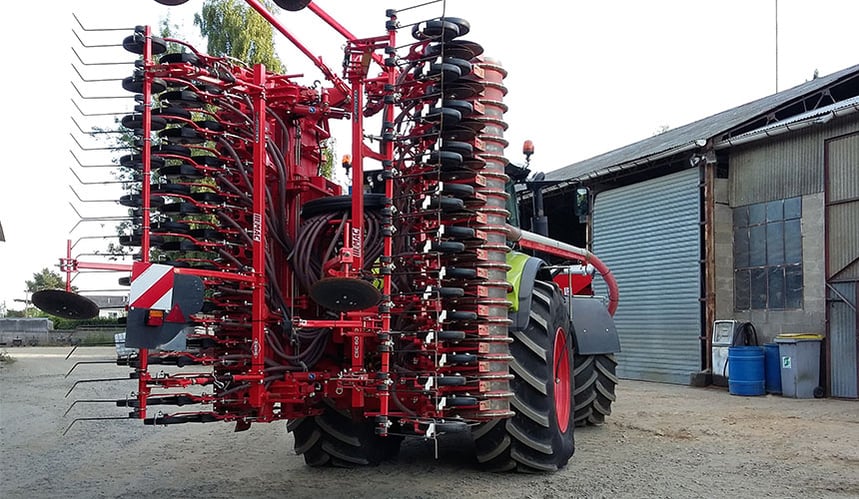 Changing tyre series allows you to increase load
Changing tyre series allows you to increase load
The particular case of NRO tyres
Certain more technological tyres such as VF tyres may have an NRO option (Narrow Rim Option) which allows you to mount wider tyres on rims which would have been too narrow for standard tyres. The suppleness of the sidewalls and the casing design provide greater flexibility and offer you the possibility of changing to larger size tyre technologies, without investing in wide rims.
The Bridgestone-agriculture.eu blog is written and administered by tractor tyre experts who are available to provide you with the advice you need on the subject of your agricultural tyres. They allow you to maximise your productivity with information on all subjects linked to tyres: Technical data for agricultural tyres – Agricultural tyre performance – Air pressure advice, Solutions to avoid soil compaction – Sprayer tyre pressure – Why and how to ballast your tractor tyres – etc.
To take it one step further and increase the profitability of your farm, les Experts du pneu provide a free, highly detailed eBook which explains the essential role of the agricultural tyre in your productivity.
Most people who read this article have also read some of the following articles which are listed by order of popularity:
- Buying guide: 10 important tips for choosing the right farming tyres
- Buying second hand agricultural tyres: opportunity or mistake?
- Full explanations on the manufacture of agricultural tyres
- Harvesting campaign: how to obtain a better bonus load?
- What materials guarantee the quality of your tractor tyres
- Which agricultural tyre configuration is suited to each use
- The best agricultural tyres for agricultural contracting companies
- How do my tractor tyres impact my vineyards?
- Agricultural contracting companies: why to invest in a tire inflation system
- Technologies that make the difference for quality agricultural tyres
This information is intended only to make you aware of the technical and functional aspects of agricultural tires and their use. It does not allow you to make a judgment or a definitive conclusion on a given problem. Only your agricultural tire expert is able to make a technical assessment and take a final decision, case by case.
Leave a
commentary
Your email address will not be published.
Required fields are indicated with *


